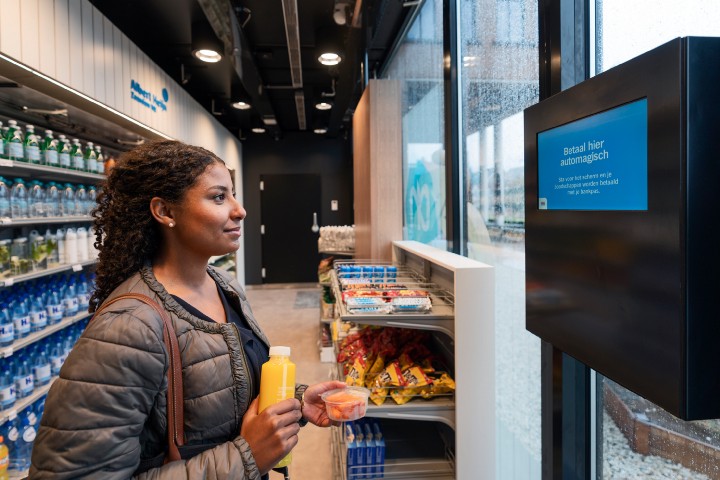
13 Oct - 3 Types of Customer Data That Retail Businesses Should Collect and Analyze
The common saying that data is the lifeblood of modern businesses has been repeated many times in the past decade, and is often used in reference to technology and software companies. However, the utility of data collection and analysis in retail is often underestimated. The rise of modern ecommerce and omnichannel retailers has begun to turn this tide.
In-store data collection has also become even easier with the introduction of autonomous retail stores. Here is how customer data is used in retail and the types of customer data that retail businesses should collect and analyze in the coming years.
The Role of Data Collection in Retail
 The popularity of ecommerce platforms has highlighted the impact that personalization can have on sales and customer satisfaction. As customers experience the benefits that data collection can provide, they have become more accepting of retailers collecting information in exchange for improved shopping experiences.
The popularity of ecommerce platforms has highlighted the impact that personalization can have on sales and customer satisfaction. As customers experience the benefits that data collection can provide, they have become more accepting of retailers collecting information in exchange for improved shopping experiences.
83% of shoppers have indicated their willingness to share their data if that can ensure a more personalized experience. Customers are now demanding personalization from businesses and retailers must evolve to better meet these needs across all their channels.
 While changing customer preferences can drive changes in operational models, retailers must also consider the business case for data collection. Data collection can help retail businesses optimize their operations. Retailers can use customer data to make quick logistical changes based on real-time performance data.
While changing customer preferences can drive changes in operational models, retailers must also consider the business case for data collection. Data collection can help retail businesses optimize their operations. Retailers can use customer data to make quick logistical changes based on real-time performance data.
They can also build effective marketing and promotional campaigns that are more likely to result in conversions online and in-store. 59% of marketers found that personalizing their online stores resulted in a positive return. With autonomous stores becoming more accessible than ever, there is no reason why this data collection model cannot be replicated in-store.
How Retail Businesses Can Collect Customer Data
Online Store Data
The most common form of data collection typically happens through online channels. Brands that have an online presence can easily collect, store, and analyze performance data and customer preferences quickly. Customers are also more likely to connect an easily identifiable account to their shopping preferences. This allows retailers to segment customer information and identify trends across different customer groups more effectively. Online stores also enable improved personalization in promotion delivery and shopping recommendations.
Customer Feedback
Customer feedback can give retailers insight into what is working or failing across their distribution channels. However, this method of data collection can be inconsistent and unreliable as a big-picture analysis of the business. Customers typically provide feedback when they feel strongly about their experience. This means that extremely positive or negative experiences are highlighted while regular operations are ignored.
Some businesses encourage customers to share feedback by offering discounts or promotions to those that do. Businesses must invest in other areas of data collection to complement the information shared in customer feedback forms.
In-Store
Brick-and-mortar retailers can collect customer and performance information in-store instead of solely relying on online methods of data collection. Typically, retailers collect in-store data by collating overall sales figures and similar logistical data. However, this data is often collected and analyzed on a per-store basis and fails to provide business leaders with an overview of how their business is performing as a whole. This method of data collection also fails to take into account customer preferences and the effectiveness of in-store operations.
AI-Powered Data Collection in Autonomous Stores
Retailers have begun to see the benefits that autonomous stores can provide, from longer operating hours to increased operational efficiency. AI systems that form the core of autonomous stores use a wide range of data points to power their operations. This information can also deliver greater insight to retailers on the popularity of their products, the efficiency of in-store operations, and the in-store behavior of their customers. Here are the types of data that retail businesses should consider collecting.
The 3 Types of Customer Data That Retail Businesses Should Collect
1. Descriptive Data
Descriptive data is essentially in-depth identity data. This information typically includes demographic data such as age, gender, and physical location. This data can help retailers identify the customer segments that align with their brand the most. Descriptive data helps retail businesses develop a greater understanding of who their main customers are.
2. Behavioral Data
Behavioral data takes descriptive data and pairs it with observable customer actions across shopping channels. This type of data helps business leaders identify shopping patterns and plan SKU purchases in accordance with changing customer preferences. This can also help team leaders plan staffing needs and promotional activities better. By pairing behavioral data with information collected through online channels, retail businesses can develop a more cohesive omnichannel shopping experience for their customers.
3. Qualitative Data
Qualitative data gives business leaders a more in-depth understanding of the information they collect across various customer engagement channels. Descriptive and behavior data can offer retailers insight into what customers do when they engage with a brand. Qualitative data can help businesses understand the underlying emotions and thoughts that drive these behaviors. Unlike other forms of data collection, qualitative data can only be gathered through active and regular engagement with customers.
How Customer Data Can Unlock Deeper Insights and Enable Better Experiences Across Customer Touch Points
Customer insight can help retailers personalize their offerings and customize their customer outreach. This encourages customers to build a strong relationship with the brand, making them more likely to return to the retailer in the future. Retailers can, however, be concerned with the investment required to build systems that enable effective data collection.
AiFi’s camera-only solution allows retailers to power autonomous stores, collect next generation shopping behavior data, and improve store performance analytics. This solution relies on computer vision and an array of cameras to avoid the excessive costs associated with smart shelves and other expensive specialized equipment.
Discover how computer vision technology can help retail businesses learn more about their customers and their preferences. Request a free demo today.





















